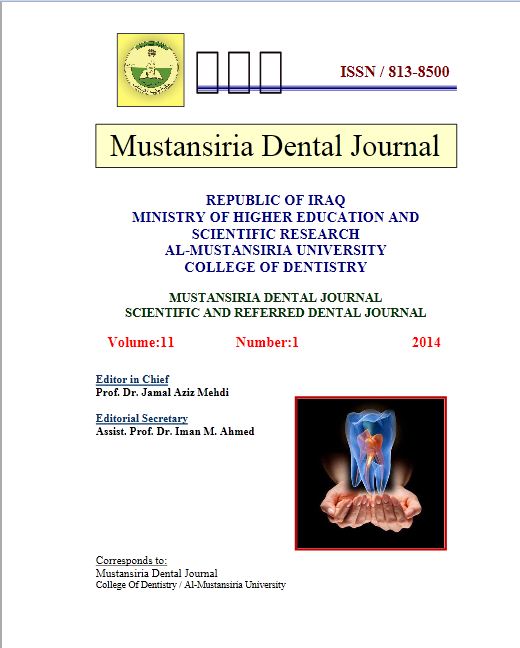The effect of polypropylene fibers in different lengths on some properties of heat-cured acrylic resin processed by autoclave
DOI:
https://doi.org/10.32828/mdj.v11i1.160Keywords:
Key words: acrylic resin, polypropylene fibers, autoclaveAbstract
Background: some properties of heat-cured acrylic resin are required to be
improved (like flexural strength, hardness and porosity) by adding different types of
fibers like polypropylene fiber, also needed to determine these properties with
addition of polypropylene fibers and curing the polymer by autoclave. The aim of this
study was to evaluate the effect of adding polypropylene fibers in two different
lengths (6mm, 12mm) and concentration 2%, and the effect of autoclave processing
on some properties(flexural, surface hardness and porosity).
Material and method: A total No. of 120 specimens were prepared in this study
and divided into two main groups according to length of fibers (6mm,12mm) , each
main group was subdivided into two groups according to method of adding the fiber
(directly to the powder or immersed in monomer). Each group of them contain 10
specimens for each test.
Result: in this study, the transverse strength and surface hardness of heat cured
acrylic reinforced by randomly oriented polypropylene fibers (12mm, 2%) regardless
to application method with higher significance than other groups. Fiber reinforcement
and autoclave processing showed non-significant effect on porosity of heat cure
acrylic resin according to ANOVA t-test.
Conclusion: Reinforcement by randomly oriented polypropylene fiber (12mm,
2%) added with and without immersion in monomer better than other groups
according to transverse strength and surface hardness with autoclave processing but
there is no effect of added fibers on porosity test.

Downloads
Published
Issue
Section
License
The Journal of Mustansiria Dental Journal is an open-access journal that all contents are free of charge. Articles of this journal are licensed under the terms of the Creative Commons Attribution International Public License CC-BY 4.0 (https://creativecommons.org/licenses/by/4.0/legalcode) that licensees are unrestrictly allowed to search, download, share, distribute, print, or link to the full texts of the articles, crawl them for indexing and reproduce any medium of the articles provided that they give the author(s) proper credits (citation). The journal allows the author(s) to retain the copyright of their published article.
Creative Commons-Attribution (BY)








